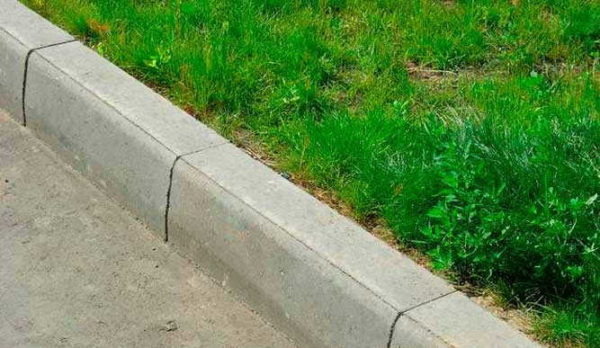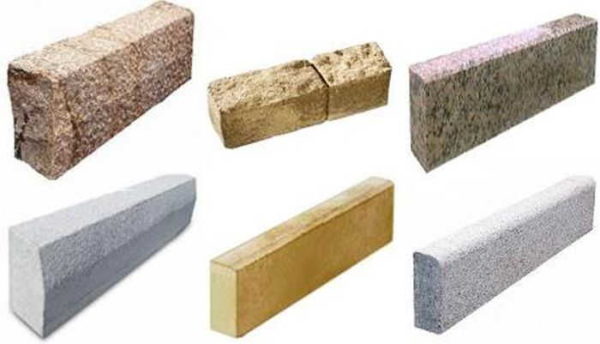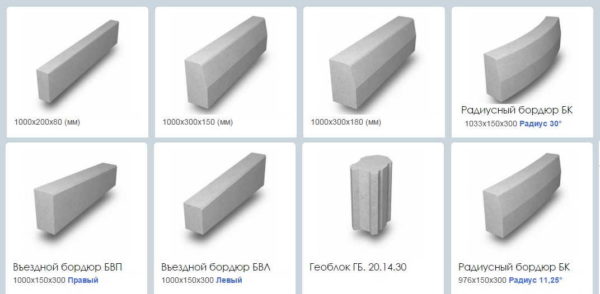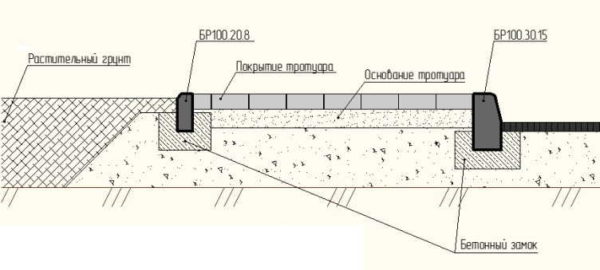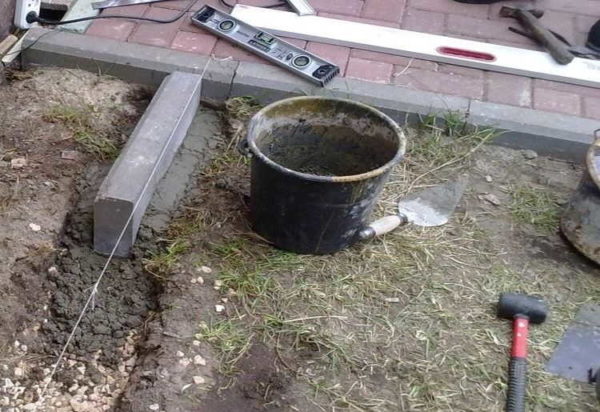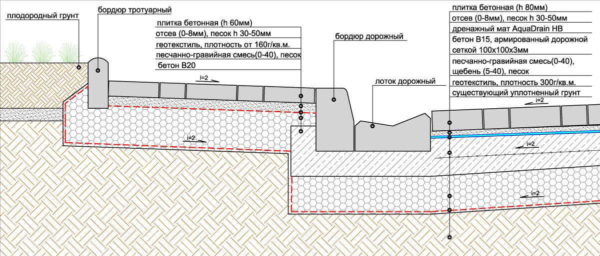DIY curbs installation
When arranging flower beds and paths, decorating a yard or local area, it is often required to install dividers. Most often, curbs are used for this (also called curbs). Moreover, the installation of the curb is not so difficult as to be sure to invite the brigade. It is quite possible to do it yourself. In any case, with assistants.
The content of the article
Purpose and types of border cameos
Curbs are used to separate areas with different surfaces and / or different loads. They can separate paths from lawns, flower beds, orchard or vegetable garden, serve as the border of pedestrian and roadways, etc.
They perform several functions at once:
- serve for the visual design of the tracks;
- redistribute the load;
- protect tracks from washing out and destruction.
If you want the tracks to serve for a long time, you need to install a border around the edge. It holds all materials, preventing them from collapsing or changing shape.
Curbs or curb stones are of various sizes, they are made from different materials, they use different technologies. The most common type is concrete curbs, but there are also plastic, vibropressed ones.
Types of concrete curbs and curbs
Concrete curbstones are the most common and come in a variety of sizes. They are divided into two categories:
- Road stone. Wider and taller, often with reinforcement inside (one or two steel rods with a diameter of 12-14 mm). Used to separate the road and pedestrian areas.
- Curbstone (also called curb, garden or sidewalk curb). Smaller and lighter, no reinforcement. Usually, walkways are separated from lawns. It can withstand short-term collisions of a car. At more serious and constant loads, it is undesirable to put them, since they are destroyed.
The rest of the types of curb stones for fencing off the carriageway are not used, since they have an insufficient level of strength.
Roads are not always straight - there are bends. It is easy to make sharp turns at an angle - put it at the right angle, and fix the junction with concrete mortar. For smooth turns, there are radius fragments with different rounding radii. They can be used to create a fence for round, oval flower beds.
Dimensions
Curb blocks are usually 1000 mm long, those designed to separate footpaths from fertile soil are 850 mm long. There are also elements with a length of 500 and 400 mm. Usually these are curbs for paving slabs. They are produced not only by the technology of cast concrete, but also by the technology of vibrocompression, which is used to manufacture the paving slabs themselves.
The height of the curb stone can be:
- 300 mm - to separate the sidewalk from the carriageway;
- 200 mm, 180 and 150 mm - for tracks.
In width 200, 180 mm (road stone), 150, 100, 80 mm (curb stone).
Installation of a curb on a sand-cement mixture or concrete
On soils prone to heaving, the curb should be installed on a bed of sand and gravel, on top of which a layer of concrete is laid, the curb is laid into it. With this installation, the curbs stand for years without problems. The procedure is as follows:
- With the help of pegs installed in key places and laces stretched between them, markings are made.
- A trench is dug according to the markings made. The width should be such that there is a distance of 10-15 cm on each side of the installed stone.The depth is chosen so that the layer of compacted rubble at the bottom is at least 10 cm, at the top - at least 5 cm of sand-cement mortar, and the curb itself rises above the surface of the path by at least a few centimeters (how much depends on your desire).
- The bottom of the finished trench is leveled and tamped (when using a vibrating plate, the width of the trench is made along the width of the plate).
- Lay layer geotextile density not less than 160 g / m². This layer is needed so that sand and crushed stone do not mix with the ground. It increases the lifespan of the curb, reduces the likelihood of shifts during spring heaving.
- A layer of coarse sand or crushed stone of a coarse or medium fraction (20-40 mm) is poured. The minimum layer is 10 cm, the optimal layer is 15 cm. Crushed stone is rammed.
- A thick solution is mixed from sand (3-4 parts) and cement (1 part) (there is very little water, just so that you can stir). It fits 5-7 cm thick (preferably 7 cm) on crushed stone.
- A curb is laid on concrete, leveled in level (to the horizon or with a slope - depends on the geology of the site).
- Around the fragment installed and exposed in the desired position, a castle of sand-cement mixture with a thickness of 5-7 cm and a height of about 10 cm is laid.
- After the concrete has set, the remaining free space between the installed curb and the edge of the trench is filled with sand or crushed stone, tamped, and sprinkled with soil on top.
If this technology is followed for installing a curb stone, the likelihood that it will move when heaving is very low.

